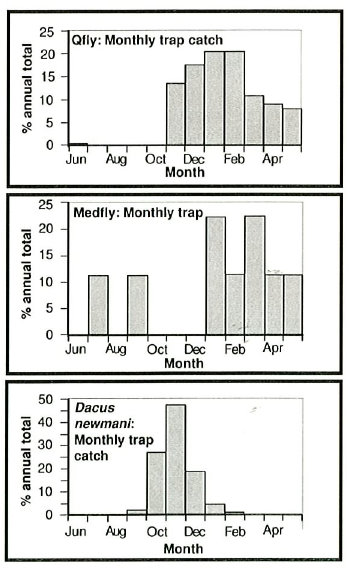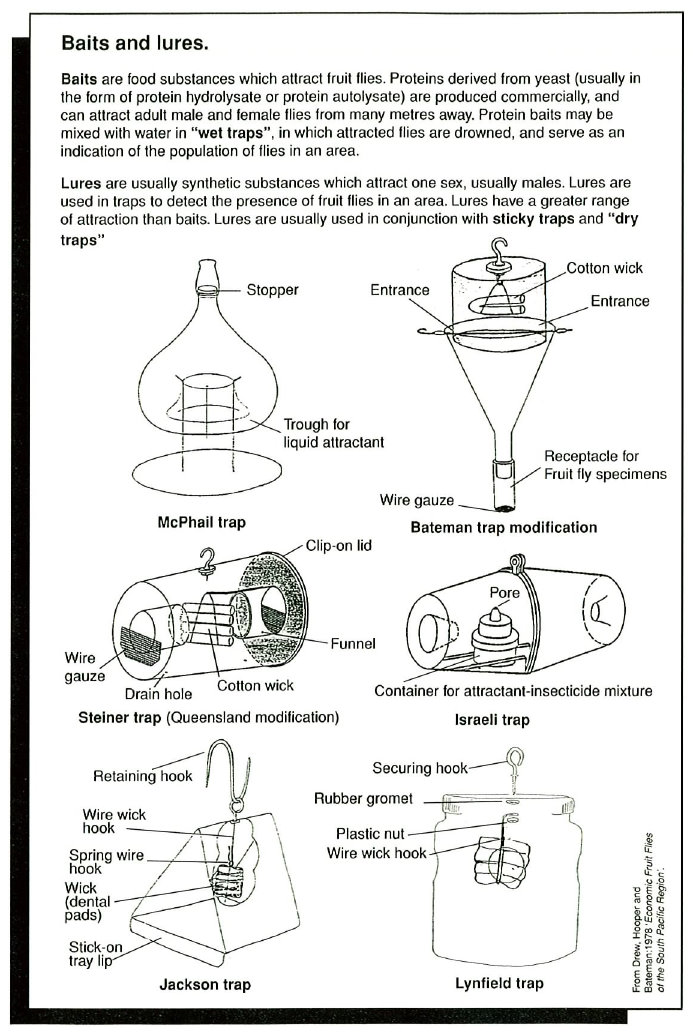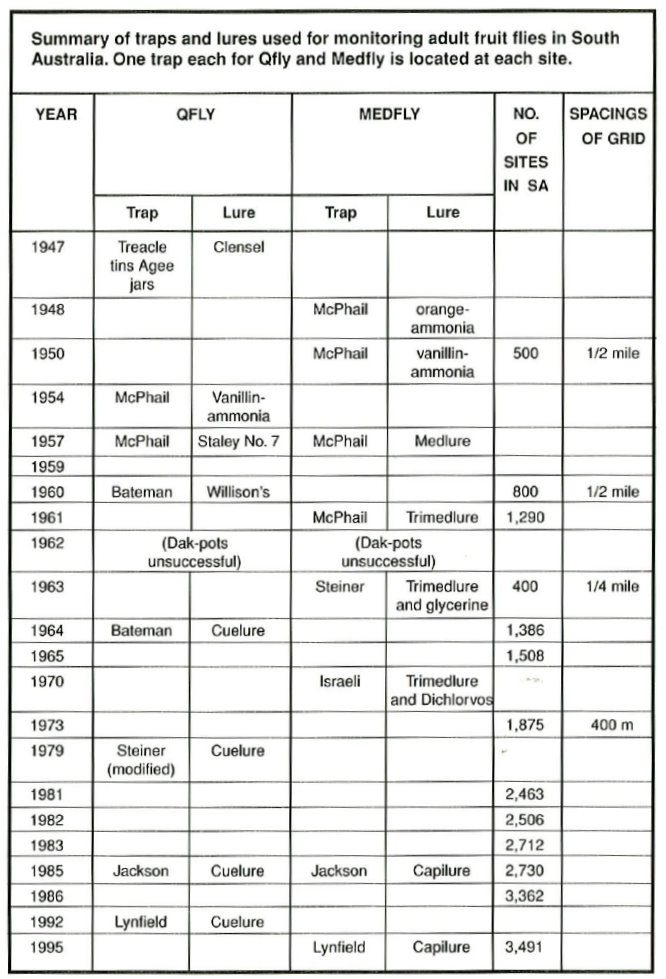Detection
The successful eradication of outbreaks since 1947 can be attributed to the early detection of fruit flies. Reports by householders of larvae in fruit, together with a detection program based on traps for adult flies, has resulted in most outbreaks being restricted to one, or a small group, of infested trees or to a very small number of flies trapped.
Proportion of outbreaks reported by members of the public; the remainder were detected by the trapping grid. During the period 1946–1978, the trapping grid was not as extensive nor the traps as efficient as in the period 1978–1997.Period Qfly Medfly
1946-1978 67% 93%
1978-1997 49% 52%
Reports from householders
The cooperation of householders is reflected in the number of outbreaks they report. The response to all public reports is attendance by an inspector who visits the house and examines the specimens. In most cases, other insects, commonly larvae of codling moth, lightbrown apple moth, dried fruit beetle, metallic-green tomato fly or ferment flies are identified. When putative fruit fly larvae are found, they are referred to an entomologist.
Detection traps for male Qfly and Medfly
The use of traps to detect the presence of adult fruit flies in South Australia has evolved since the first outbreak in 1947. The design of trap, the lure used to attract the flies, and the distance between traps in the grid has changed to reflect new technology (particularly in the composition of lures), new trap designs (an “improved” trap design is described in the literature every two to three years) and the resources available to service the detection grid.
Almost all the information used to construct the detection grid has been derived from research on Qfly by CSIRO and state Departments of Agriculture in New South Wales, Queensland and Victoria, and the University of Sydney and on Medfly by a number of foreign institutes, particularly the United Stated Department of Agriculture (USDA), but also by the Western Australian Department of Agriculture. No research has be done in South Australia on the comparative behaviour of the traps under South Australian conditions.
The months in which male Qflies were caught in Cuelure Jackson traps 1985–1992 are shown in the figure below, and reflect a pattern of detection during summer and early autumn. Outbreaks were declared on the basis of catches of many of these flies, but some were isolated catches of single males, assumed to have dispersed from their point of introduction.



The pattern of detection of Med fly, as reflected in male catches in Capilure Jackson traps, 1985–92 is shown in the Figure. Detection usually starts later than Qfly, and extends into winter.
Males of the inland fruit fly, Dacus newmani, are attracted to Cuelure, and are caught coincidentally during trapping operations. They become active in spring and peak during summer.
Sentinel traps to detect incursions of other fruit flies
The lures used to attract Qfly and Medfly to traps do not attract many other fruit flies of economic importance which may be accidentally introduced to South Australia. There are a group of economically important fruit flies which are attracted to the lure methyl eugenol; these flies include the mango fly Bactrocera papayae and the Oriental fruit fly, Bactrocera dorsalis.
The response in South Australia to the suspected outbreak of oriental fruit fly B. dorsalis in northern Australia in 1975 was to put out 35 traps baited with methyl eugenol., distributed over in the metropolitan grid. The numbers were later increased to 40. Seven Bateman traps were placed in Riverland towns in 1987. No B. dorsalis were collected while these traps were in operation.
Attractiveness of lures
The range of attraction of lures varies with the species of fruit fly, and the type of lure. Although no detailed observations have been done of the attractiveness of Cuelure to Qfly under South Australian conditions, an attractive range of several hundred metres is probably reasonable, making the 400m distance between traps a compromise between behaviour of the fly and the cost of detection.
Medfly does not appear to be nearly as attracted to lures as Qfly, and it is likely that the attraction to traps may be measured in scores of metres.
The proportion of males of a population attracted to traps is probably less than 4% of the flies in the vicinity of the trap.
